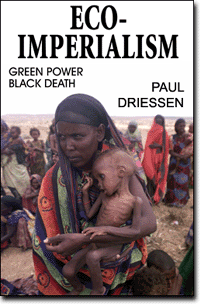by The Washington Times
The Washington Times
April 2004
Published April 17, 2004
http://www.washtimes.com/op-ed/20040416-085250-8026r.htm
In a remarkable article in last Sunday’s New York Times Magazine, titled “What the World Needs Now is DDT,” Tina Rosenberg argues that Westerners’ irrational fears of DDT are allowing malaria to take a devastating toll on Africans.
The costs of malaria are simply staggering. According to the World Health Organization, malaria kills more than 1 million individuals each year, most of them African children. It afflicts between 300 million and 500 million. WHO estimates that each year, malaria cuts the GDP of African nations by 1.3 percent and costs them $12 billion in economic losses.
Yet as Ms. Rosenberg pointed out, “global health institutions like WHO and its malaria program, Roll Back Malaria, actively discourage nations from using [DDT].” At best, other international health and aid agencies simply don’t fund its use. Instead, those organizations promote the use of insecticide-treated bed nets or the use of other drugs that are not only more expensive than DDT, but are also becoming increasingly ineffective with the rise of drug-resistant strains of malaria.
DDT is shunned for reasons as sad as they are simple. DDT scares Westerners, particularly those with memories of Rachel Carson’s Silent Spring. Westerners also worry that they will be accused of hypocrisy, encouraging African counties to use a substance their own citizens won’t touch.
No one wants to see more bald eagles die due to overdoses of DDT. Nor is anyone likely to do so if DDT is re-introduced. While Western nations used crude DDT spraying techniques to eliminate malaria (a disease once common in the United States), it is now known that twice-yearly spraying inside homes will suffice. Besides, Westerners rarely need DDT, while Africans are dying daily of malaria.
A recently released analysis by the Cato Institute, “South Africa’s War against Malaria,” showed a direct correlation between the use of DDT and deaths due to malaria. South Africa stopped using the chemical in 1996, and within four years, malaria deaths increased from under 10,000 in 1996 to more than 60,000 in 2000. At that point, South Africa resumed limited DDT use. By 2003, malaria infections and mortality rates had almost returned to 1996 levels.
There is no charitable way to put it: Children are dying while Westerners worry about double standards and fictitious environmental effects. Aid agencies need to drop their opposition to the use of DDT in Africa and encourage the countries now considering using it, including Uganda and Kenya. Ms. Rosenberg is right — what the world needs now is DDT.
